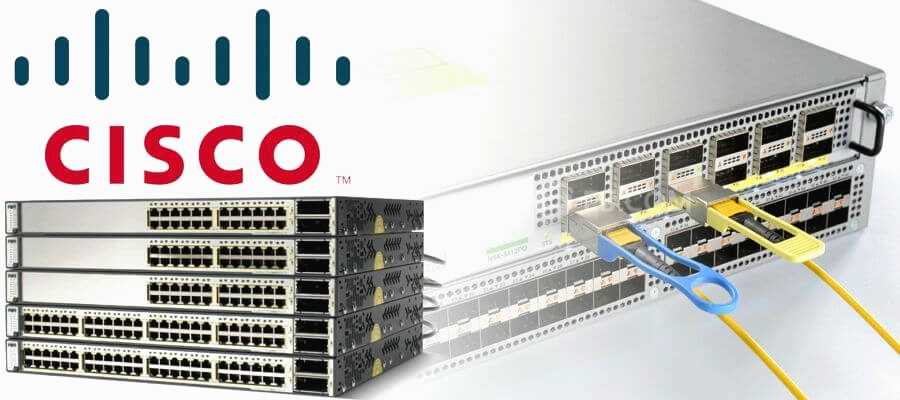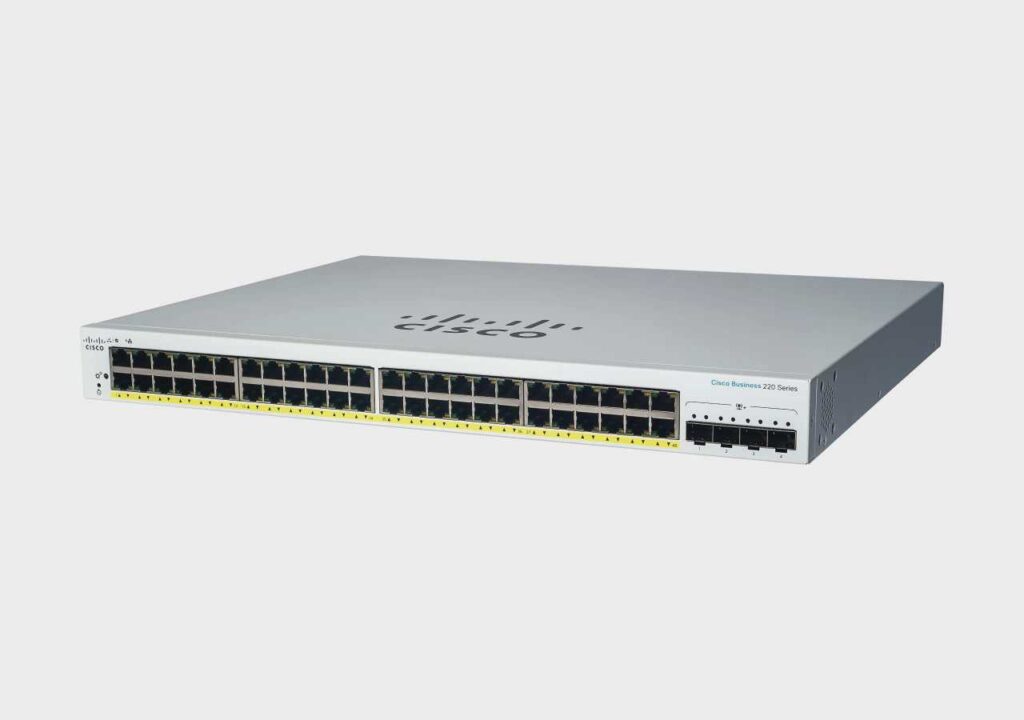Configuring a Cisco switch might seem daunting at first, but with the right guidance, it becomes a manageable task. In this guide, we’ll share more light through the process of configuring a Cisco switch, using simple English and clear instructions. Whether you’re a beginner or looking to refresh your knowledge, this guide is designed to help you achieve a successful configuration.
What Is Cisco (Technology)?
Cisco Systems, Inc. is a multinational technology conglomerate based in San Jose, California. It is known for designing, manufacturing, and selling networking hardware, software, telecommunications equipment, and other high-technology services and products. Cisco is a leading player in the networking industry and provides solutions that connect people, computing devices, and computer networks, allowing people to access or transfer information.
Actions Performed by a Cisco Switch
Cisco switches are essential components in a network, performing various critical actions. Here are two key actions performed by a Cisco switch:
- Packet forwarding: Cisco switches are responsible for forwarding data packets between devices on a network. They use MAC (Media Access Control) addresses to determine the destination of each packet and ensure it reaches the correct device. This process is known as packet forwarding and is crucial for efficient network communication.
- VLAN segmentation: Another important action performed by Cisco switches is VLAN (Virtual Local Area Network) segmentation. VLANs allow network administrators to segment a physical network into multiple logical networks. This segmentation improves security, reduces broadcast traffic, and enhances network performance by isolating different segments of the network.
Characteristics of RAM on a Cisco Device
Random Access Memory (RAM) is a critical component in any networking device, including Cisco switches and routers. Here are two key characteristics of RAM on a Cisco device:
- Volatility: RAM on a Cisco device is volatile, meaning it loses its data when the device is powered off or restarted. This characteristic is essential for temporary storage, allowing the device to quickly access and process information while it is running. Volatility ensures that the RAM is cleared and ready for new data upon each reboot, maintaining efficient operation.
- Speed: RAM is much faster than other types of storage, such as hard drives or solid-state drives (SSDs). This speed is crucial for the performance of Cisco devices, enabling them to handle large volumes of data quickly and efficiently. High-speed RAM allows for rapid data retrieval and processing, essential for maintaining optimal network performance.
Cisco Switch Configuration
Cisco switches are integral components of a network, allowing multiple devices to communicate efficiently. Proper configuration ensures optimal performance, security, and reliability. Here, we will cover the basics of setting up and configuring a Cisco switch, from initial setup to more advanced configurations.
Basic Concepts and Terminology
Before diving into the configuration process, it’s essential to understand some basic terms and concepts:
- Switch: A device that connects multiple devices within a network and uses packet switching to forward data to its destination.
- VLAN (Virtual Local Area Network): A method to create separate networks within a switch, improving security and performance.
- CLI (Command-Line Interface): The interface used to configure Cisco switches using text-based commands.
- Port: An interface on a switch to which devices are connected.
Tools and Requirements
To configure a Cisco switch, you’ll need the following tools:
- Console Cable: To connect your computer to the switch.
- Terminal Emulator Software: Software like PuTTY or Tera Term to access the switch’s CLI.
- Cisco Switch: The switch you intend to configure.
- PC or Laptop: To run the terminal emulator software.

Initial Setup
Step 1: Connect to the Switch
- Connect the Console Cable: Connect one end of the console cable to the switch’s console port and the other end to your computer’s serial port (or USB-to-serial adapter).
- Open Terminal Emulator: Launch your terminal emulator software and configure it to use the appropriate COM port with the following settings:
- Baud rate: 9600
- Data bits: 8
- Parity: None
- Stop bits: 1
- Flow control: None
Step 2: Access the CLI
- Power On the Switch: Turn on the switch and wait for it to boot.
- Access CLI: In the terminal emulator, press
Enterto access the CLI. You should see the switch prompt, typicallySwitch>.
Step 3: Enter Privileged EXEC Mode
To execute configuration commands, you need to enter the privileged EXEC mode:
Switch> enable
Switch#Step 4: Enter Global Configuration Mode
Global configuration mode allows you to make changes to the switch’s configuration:
Switch# configure terminal
Switch(config)#Basic Configuration Steps
Step 1: Set a Hostname
Setting a hostname helps in identifying the switch within the network:
Switch(config)# hostname MySwitch
MySwitch(config)#Step 2: Configure Passwords
Setting passwords enhances security:
- Enable Password: Protects access to privileged EXEC mode.
MySwitch(config)# enable secret yourpassword- Console Password: Secures access via the console port.
MySwitch(config)# line console 0
MySwitch(config-line)# password yourpassword
MySwitch(config-line)# login
MySwitch(config-line)# exitStep 3: Configure Network Management IP Address
Assigning an IP address allows remote management of the switch:
MySwitch(config)# interface vlan 1
MySwitch(config-if)# ip address 192.168.1.2 255.255.255.0
MySwitch(config-if)# no shutdown
MySwitch(config-if)# exitStep 4: Configure Default Gateway
Set the default gateway to enable communication with other networks:
MySwitch(config)# ip default-gateway 192.168.1.1Step 5: Save Configuration
Save your configuration to ensure changes are retained after a reboot:
MySwitch# write memoryOr
MySwitch# copy running-config startup-configAdvanced Configuration
VLAN Configuration
Creating VLANs helps in segmenting the network for better performance and security.
- Create a VLAN:
MySwitch(config)# vlan 10
MySwitch(config-vlan)# name Sales
MySwitch(config-vlan)# exit- Assign Ports to a VLAN:
MySwitch(config)# interface range fastethernet 0/1 - 12
MySwitch(config-if-range)# switchport mode access
MySwitch(config-if-range)# switchport access vlan 10
MySwitch(config-if-range)# exitConfiguring Trunk Ports
Trunk ports carry traffic for multiple VLANs, essential for switches communicating within a VLAN.
MySwitch(config)# interface fastethernet 0/24
MySwitch(config-if)# switchport mode trunk
MySwitch(config-if)# switchport trunk allowed vlan 10,20
MySwitch(config-if)# exitSetting Up SSH for Secure Management
SSH provides secure remote access to the switch.
- Generate RSA Keys:
MySwitch(config)# crypto key generate rsa- Configure SSH and Line VTY:
MySwitch(config)# ip domain-name example.com
MySwitch(config)# username admin secret yourpassword
MySwitch(config)# line vty 0 4
MySwitch(config-line)# transport input ssh
MySwitch(config-line)# login local
MySwitch(config-line)# exitTroubleshooting and Maintenance
Common Commands
- Show Running Configuration: Displays the current configuration.
MySwitch# show running-config- Show IP Interface Brief: Shows the status of all interfaces.
MySwitch# show ip interface brief- Show VLAN: Lists VLAN information.
MySwitch# show vlan briefBackup Configuration
Regularly back up your configuration to avoid data loss.
MySwitch# copy running-config tftp
Address or name of remote host []? 192.168.1.100
Destination filename [my-switch-config]?Reset to Factory Defaults
If necessary, you can reset the switch to its factory settings:
MySwitch# write erase
MySwitch# reloadNOTE: Remember, practice is key to becoming proficient. If you encounter any issues or have questions, don’t hesitate to seek further assistance.

